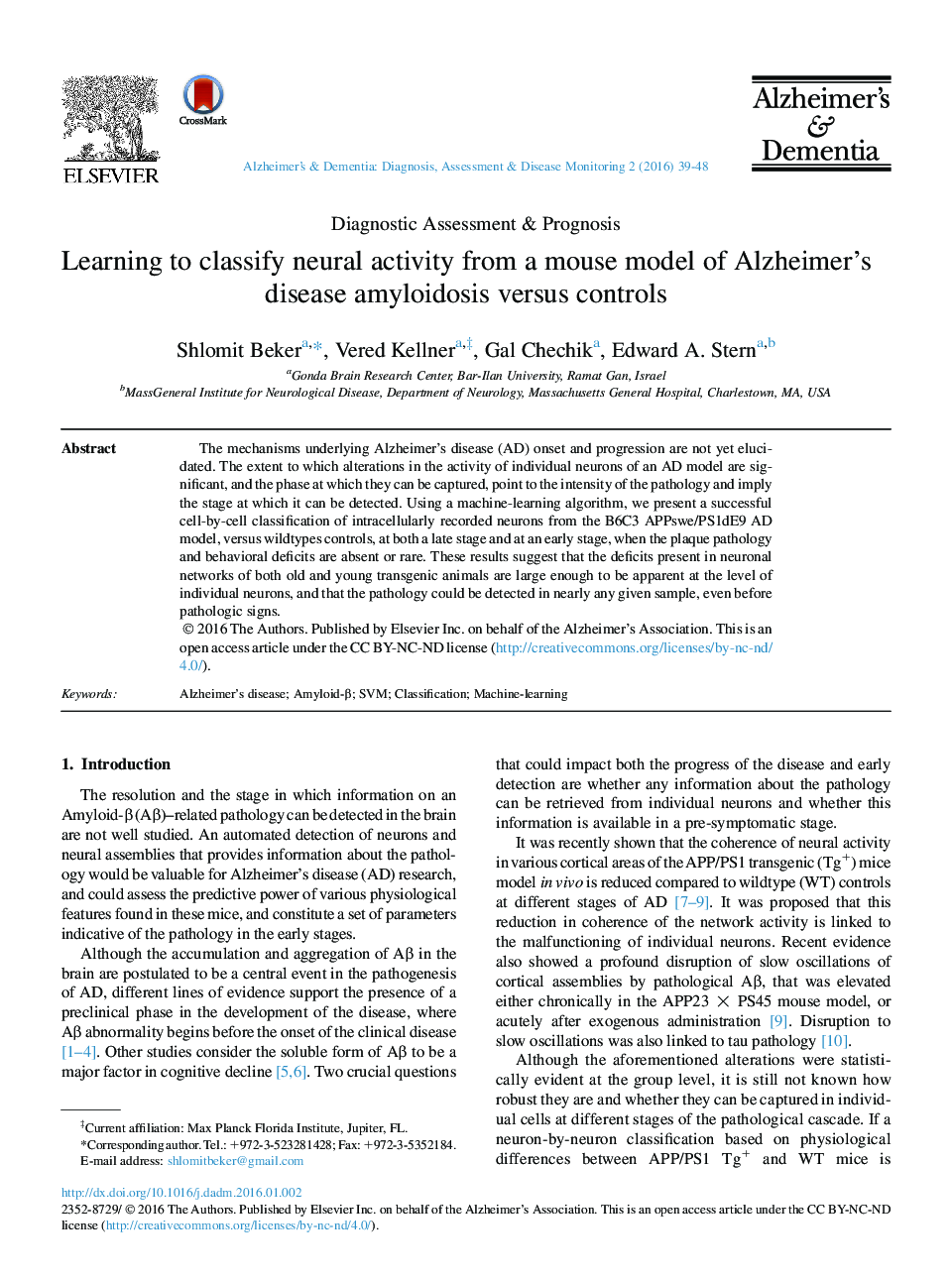| Article ID | Journal | Published Year | Pages | File Type |
|---|---|---|---|---|
| 3031996 | Alzheimer's & Dementia: Diagnosis, Assessment & Disease Monitoring | 2016 | 10 Pages |
The mechanisms underlying Alzheimer's disease (AD) onset and progression are not yet elucidated. The extent to which alterations in the activity of individual neurons of an AD model are significant, and the phase at which they can be captured, point to the intensity of the pathology and imply the stage at which it can be detected. Using a machine-learning algorithm, we present a successful cell-by-cell classification of intracellularly recorded neurons from the B6C3 APPswe/PS1dE9 AD model, versus wildtypes controls, at both a late stage and at an early stage, when the plaque pathology and behavioral deficits are absent or rare. These results suggest that the deficits present in neuronal networks of both old and young transgenic animals are large enough to be apparent at the level of individual neurons, and that the pathology could be detected in nearly any given sample, even before pathologic signs.
